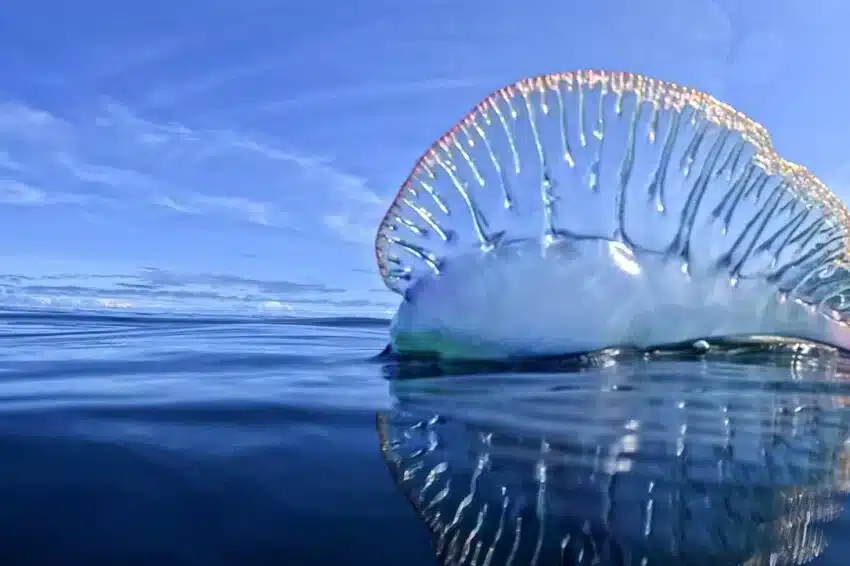IPMA promotes “Dia GelVista” (Jelly-spotting day)
With the season of jellyfish (some nastier than others) upon us, and seawater temperatures increasing, IPMA – Portugal’s meteorological institute – has launched another ‘great jellyfish count’ – a day when it asks beachgoers to count the number of jellyfish they can see (without touching them) and upload results online.
Dia GelVista (Jelly-spotting day) is tomorrow (Saturday). Its objective is to “better understand the situation of gelatinous organisms, like ‘medusas’ (everyday jellies) and ‘caravelas-portuguesas’ (the potentially much nastier Portuguese Man o’War).
Both types of ‘gelatinous organisms’ are among “the most unknown animals” in science, and represent one of the greatest challenges in the study of the marine environment.
Dia GelVista coordinator Antonina dos Santos tells Lusa that she and her team “want to hear what people are seeing” (whether they are on a beach with jellies, or not…) And if people aren’t sure whether what they are looking at is a jellyfish, they are encouraged to photograph it and either send the image to the project’s email address: plancton@ipma.pt or upload it to the GelVista app. All this information (even if it is ‘no information: ‘no jellies on this beach’) “is fundamental to understanding the evolution of gelatins in the Portuguese sea”, she explained.
In some parts of the world, jellyfish are on the increase, almost certainly due to climate change/ warming water temperatures. But in Portugal, so far, there is “not enough data”, dos Santos stresses – and data is needed, to check how jellyfish are evolving: are they getting bigger, for instance? Are they moving in on ecosystems under pressure?
TOUCHING EXPRESSLY FORBIDDEN
This is the secondary message of Dia GelVista: do not touch, under any circumstances. As too many people will relate, contact with a Portuguese Man o’War, or many other jellyfish, can be very painful – and a sting can even cause heart issues.
In case contact is made, advice is to wash the affected area liberally with seawater, removing any part of a jellyfish that is stuck to the skin, and then putting a hot compress on the wound (jellyfish stings should not be covered, or have alcohol used on them, warns dos Santos).
This is the eighth GelVista campaign. The project’s online page gives a lot of information on jellyfish and which areas tend to host what kind.
The Algarve, for example, has a ‘medusa compasso’ – another jellyfish that can pack a major sting, while Azores and Madeira have the ‘água-viva’, which causes burns which should be treated with ice.
Source material: LUSA


























